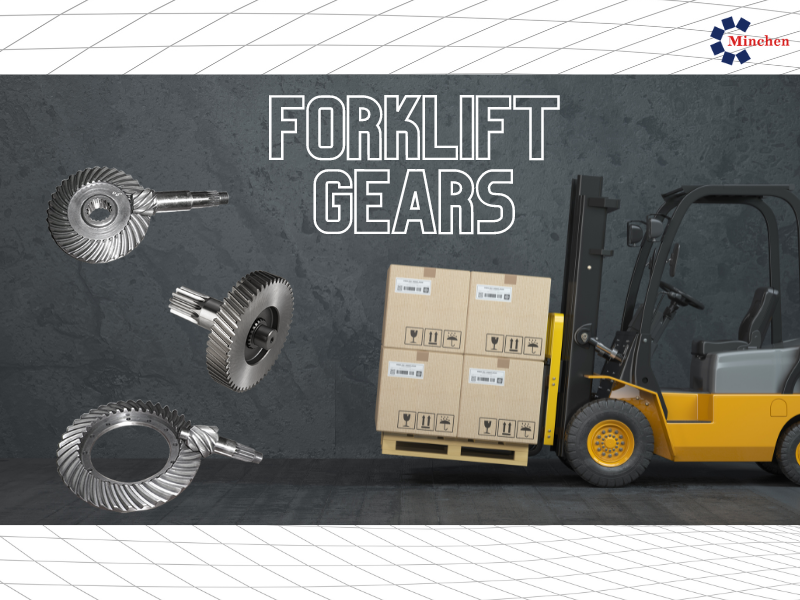Everything you need know about forklift.

Forklifts play an essential role in many industries today, from manufacturing, warehousing, construction, to logistics and more. Forklifts work by lifting and moving heavy loads with ease, speed, and precision. They are commonly used in indoor and outdoor environments, making them suitable for various applications. However, the functionality of a forklift heavily relies on the quality and reliability of each component, and the forklift gear is one of the critical components that enable smooth and efficient operation. In this article, we will dive deep into everything you need to know about forklifts and the role of forklift gears in ensuring their optimal performance.
Forklifts 101 - What You Need to Know
At a fundamental level, forklifts are material handling equipment designed to lift, carry, and transport heavy loads. They use a combination of hydraulics, pneumatics, and electricity to operate efficiently. Forklifts come in various sizes, capacities, and types, from small warehouse forklifts to large outdoor forklifts used in ports and construction sites. Each type of forklift is designed for specific tasks and has unique features and functionality.
Forklifts can be classified based on various factors such as fuel type, power source, capacity, and more. For instance, they can run on electric batteries, diesel, gasoline, or LPG. Electric forklifts are ideal for indoor applications as they generate zero emissions and operate quietly. Diesel forklifts are excellent for outdoor use and heavy-duty applications, while gasoline forklifts are ideal for indoor and outdoor use. LPG forklifts are versatile and suitable for various applications.
Another factor that differentiates forklifts is their power source. Besides the traditional combustion engine-powered forklifts, there are also electric forklifts that run on batteries. Electric forklifts are becoming increasingly popular as companies aim to reduce emissions and increase safety in the workplace. In terms of capacity, forklifts range from less than 1 ton to over 50 tons, depending on the application.
Forklift Gears - The Key to Smooth Operation
The forklift gear system is a set of mechanical components that transmits power from the engine to the wheels. The gears are responsible for controlling the speed and torque of the forklift as well as transferring power from the engine to the wheels. Forklift gears are an essential component in ensuring smooth operation, especially when it comes to carrying heavy loads. Without the right gears, a forklift would struggle to move or carry heavier loads, impacting productivity and safety.
Forklift gears are made from various materials, including steel, brass, and aluminum. Each material has its advantages and disadvantages depending on the application. For instance, if the gears are used in outdoor environments, a more durable material such as steel would be more suitable. However, if the gears are used in indoor environments, a lighter material such as aluminum would be preferable.
Forklift gear systems are available in different models and types, which include manual, automatic, and hydrostatic transmissions. Manual transmissions are the oldest type of transmission used in forklifts. They require the operator to shift gears manually, which can be challenging and time-consuming, especially during heavy load movements.
Automatic transmissions, on the other hand, are more modern and efficient. They do not require any intervention from the operator, and the forklift adjusts gears automatically, depending on the load and speed. Automatic transmissions are more suitable for busy environments or where operators are not highly skilled in gear shifting.
Hydrostatic transmissions rely on hydraulic pumps to drive the forklift's wheels. They are an excellent choice for heavy-duty applications that require high torque and traction, such as construction sites or towing operations. The hydrostatic transmission is also known for its smooth performance and low maintenance requirements.
Conclusion
In conclusion, forklifts are indispensable in various industries, and the performance of a forklift heavily relies on the quality of its components. Minchen, a leading manufacturer in Taiwan, takes pride in producing high-quality forklift gears that contribute to the efficiency and safety of material handling operations. By understanding the nuances of forklifts and the importance of gears, businesses can make informed decisions when selecting equipment for their specific applications.
Choose Minchen for reliable forklift gears, manufactured with precision in Taiwan, to elevate the performance and longevity of your material handling equipment.

